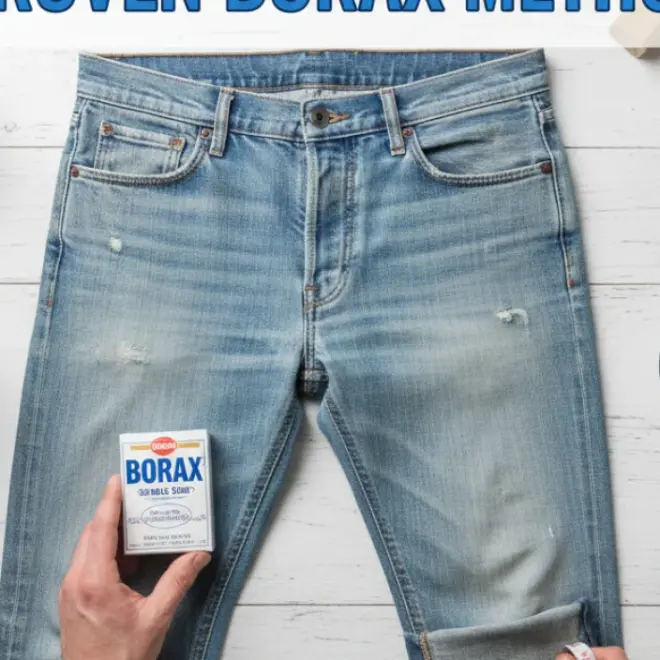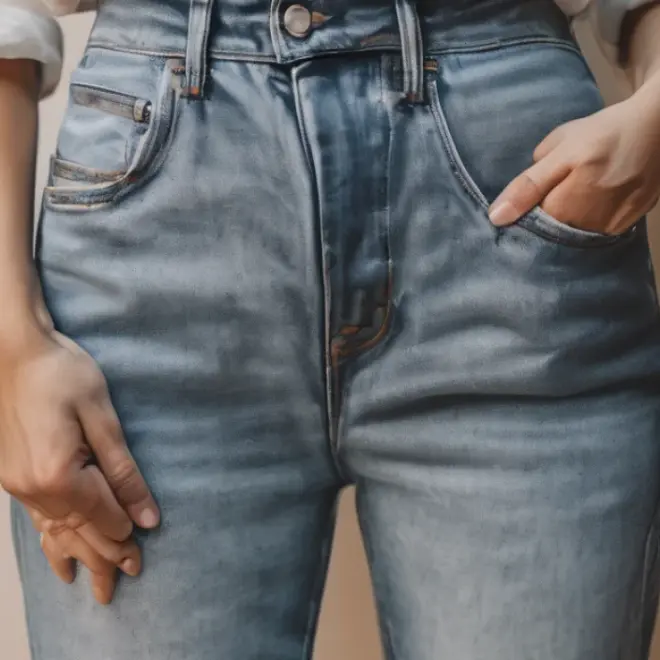Quick Summary: Spilled curry on your favorite jeans? Don’t panic! Act fast with a simple dish soap and cold water soak, followed by an enzyme-based stain remover. This proven method tackles the grease and turmeric stains effectively, saving your denim from a permanent yellow hue.
How To Remove Curry From Jeans: Proven & Essential Steps
Curry stains on denim are a common kitchen mishap. That vibrant turmeric, delicious as it is, can leave a stubborn yellow mark on your jeans. But don’t worry, with a few simple steps and the right approach, you can rescue your favorite pair.
This guide will walk you through the most effective methods, from immediate action to tackling set-in stains. We’ll cover what you need, how to apply it, and crucial tips to ensure your jeans look as good as new.
Why Curry Stains Are Tricky
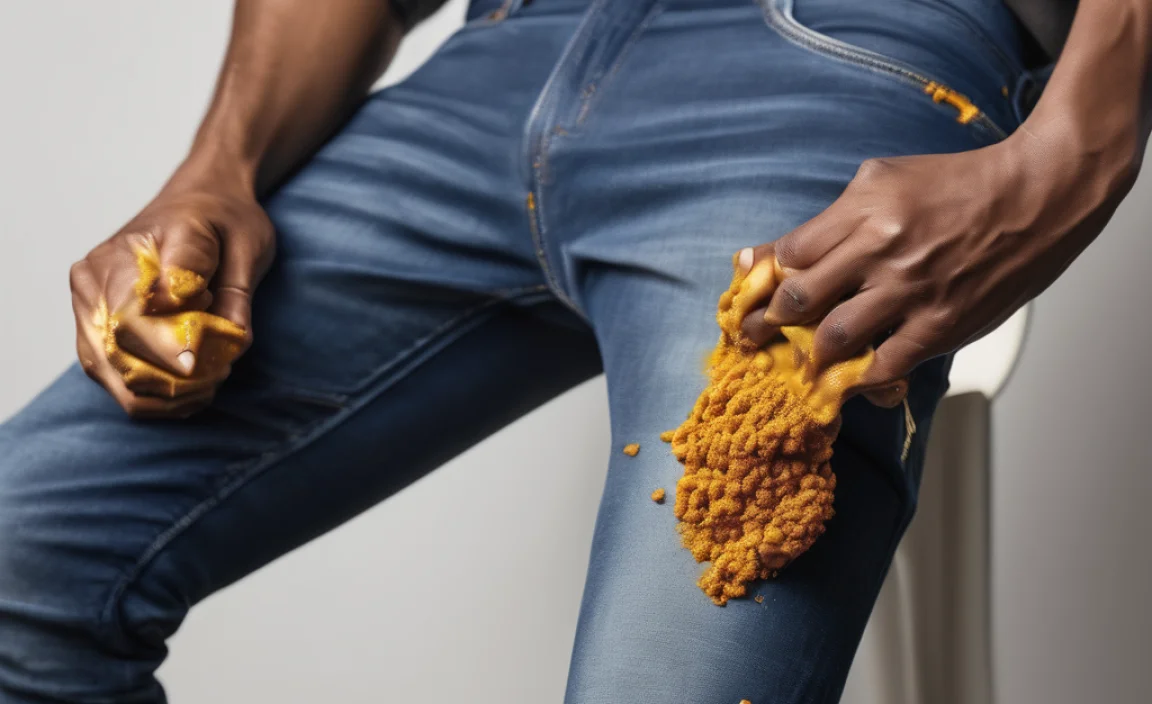
Curry’s notorious staining power comes from its key ingredients, primarily turmeric and oil. Turmeric contains curcumin, a potent pigment that binds easily to fabric fibers, especially natural ones like cotton in your jeans. The oil further helps the pigment penetrate the fabric, making it tough to lift without the right treatment.
The key to success is speed and using the right cleaning agents that break down both the pigment and the oil. Heat can actually set these stains, so cold water is your best friend for initial treatment.
Essential Items You’ll Need
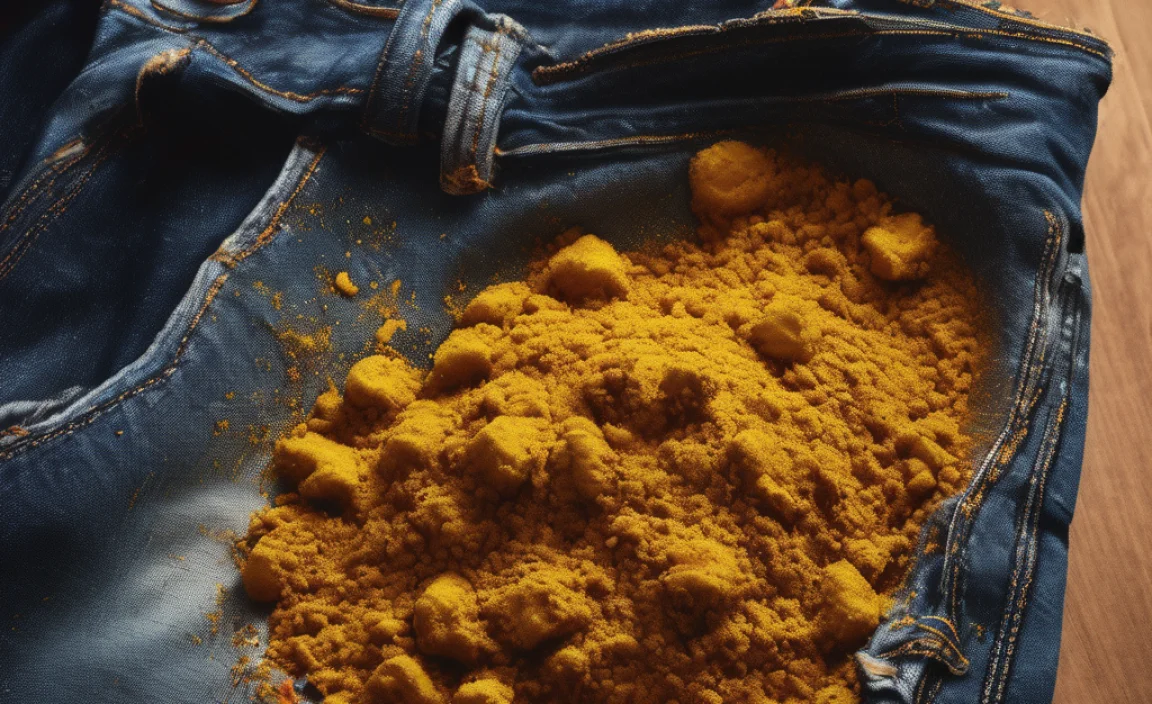
Gathering these items before you start will make the stain removal process much smoother:
- Paper towels or a clean cloth
- Cold water
- Liquid dish soap (a grease-cutting variety is best)
- Enzyme-based laundry detergent or stain remover (look for one specifically for protein or grease stains)
- White vinegar (optional for tougher stains)
- Baking soda (optional for boosting cleaning power)
- A soft-bristled brush (like an old toothbrush)
- A clean, white towel for blotting
Immediate Action: The First 30 Minutes
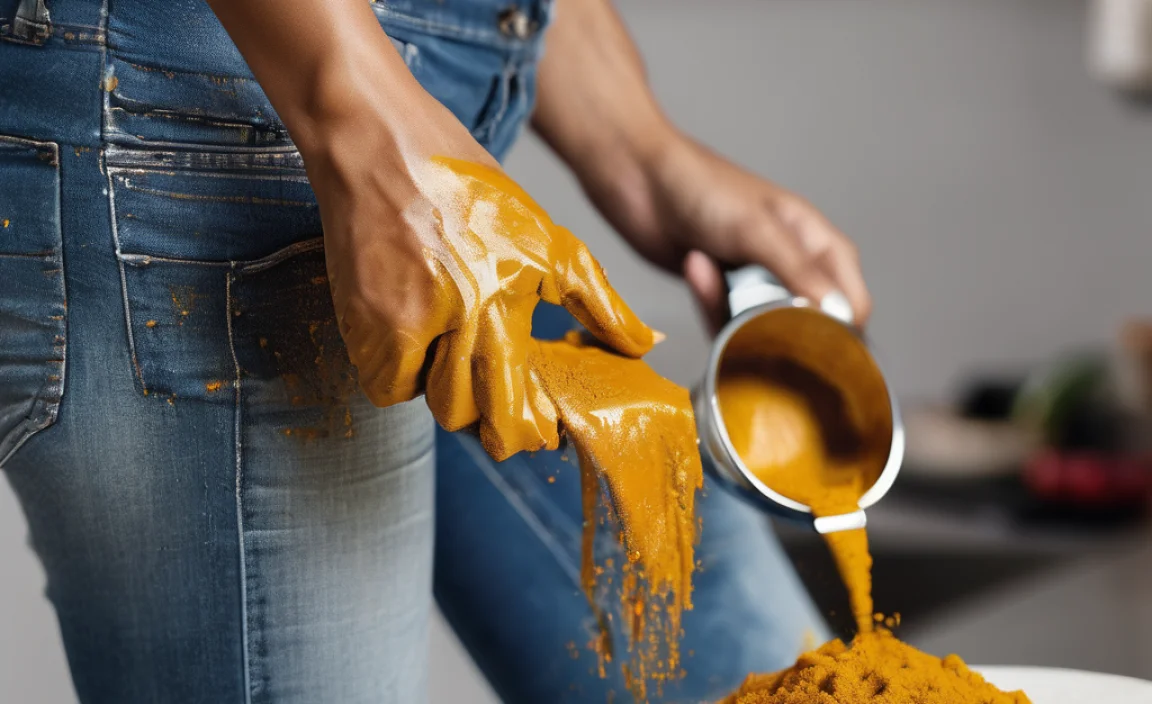
The sooner you address the stain, the better your chances of complete removal. Here’s what to do right away:
- Blot, Don’t Rub: Immediately grab paper towels or a clean cloth and gently blot the stained area. Absorb as much of the excess curry as possible. Rubbing will only spread the stain and push it deeper into the fabric.
- Rinse with Cold Water: Turn the jeans inside out and hold the stained area under cold running water. Flush the stain from the back to push the curry out of the fibers.
- Apply Dish Soap: Apply a generous amount of liquid dish soap directly to the stain. Gently work it into the fabric with your fingers. Dish soap is excellent at breaking down the oils in the curry.
- Let it Sit: Allow the dish soap to sit on the stain for about 5-10 minutes.
- Rinse Again: Rinse the area thoroughly with cold water. Check to see if the stain has lightened. If it’s still visible, proceed to the next steps.
Remember, at this stage, avoid hot water and direct heat from a dryer, as this can permanently set the stain.
Step-by-Step Guide to Removing Curry Stains
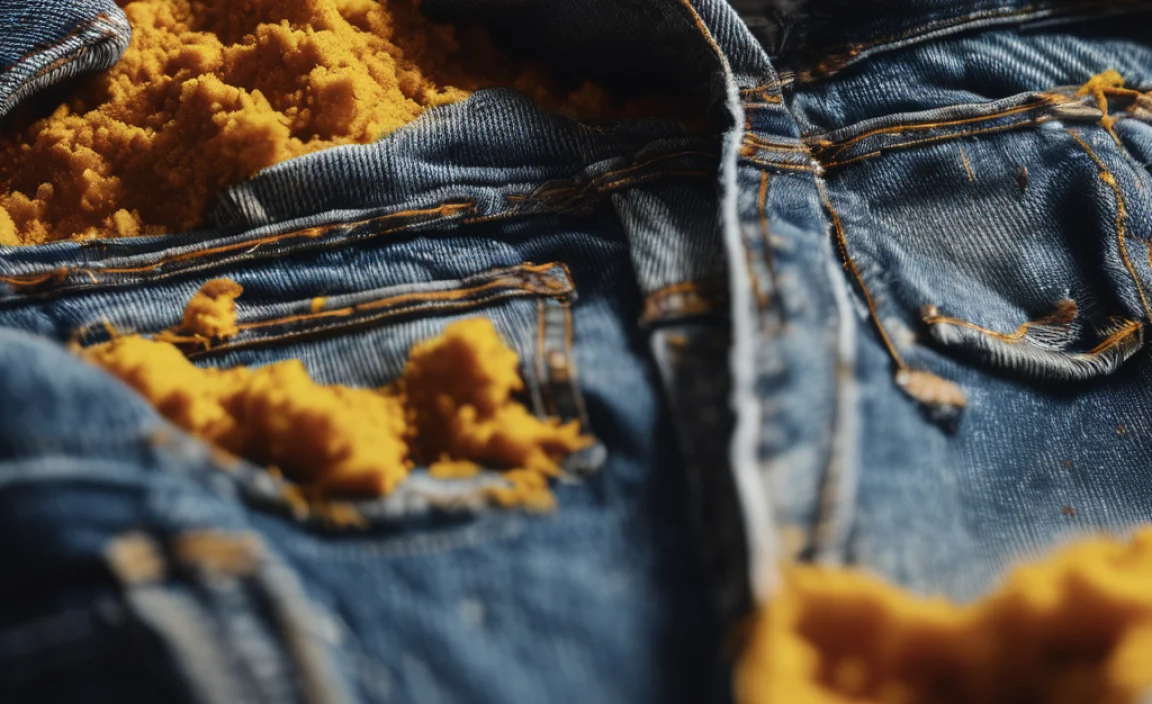
If the immediate action wasn’t enough, or if the stain has had a little time to settle, follow these more intensive steps.
Step 1: Pre-Treatment with Stain Remover
This step is crucial for tackling both the pigment and the oil residue.
- Choose Your Weapon: Select an enzyme-based stain remover or liquid laundry detergent. Enzymes are proteins that break down other proteins and organic matter, making them highly effective against food stains. You can find excellent enzyme-based cleaners at most grocery or online.
- Apply Liberally: Apply the stain remover directly onto the curry stain, ensuring it saturates the affected area.
- Gentle Agitation: Use a soft-bristled brush (like an old toothbrush) or your fingers to gently work the stain remover into the jeans. Be careful not to scrub too hard, as this can damage the denim fibers.
- Soak Time: Let the stain remover sit for at least 15-30 minutes. For older or tougher stains, you might need to leave it for several hours or even overnight.
Step 2: Cold Water Soak
Soaking helps the stain remover work its magic and loosens any remaining curry particles.
- Prepare the Soak: Fill a basin or sink with cold water.
- Submerge: Submerge the stained portion of the jeans (or the entire pair) into the cold water.
- Soak Duration: Let the jeans soak for at least 30 minutes. For stubborn stains, you may need to soak for a few hours.
Step 3: Launder as Usual (with Caution)
After soaking, it’s time to put the jeans through the wash.
- Wash Cycle: Wash the jeans in your washing machine on a normal cycle using cold water and your regular laundry detergent. Add an extra dose of the enzyme-based stain remover directly into the wash drum if the stain was particularly bad.
- Avoid Hot Water: Always opt for a cold water wash. Hot water can set curry stains permanently.
Step 4: Air Dry and Inspect
This is a critical step often overlooked.
- Resist the Dryer: Do NOT put the jeans in the dryer until you are absolutely sure the stain is gone. The heat from the dryer will set any remaining pigment.
- Air Dry: Hang the jeans to air dry, preferably in a shaded area. Direct sunlight can sometimes cause fading or even set certain types of stains while bleaching others.
- Inspect Thoroughly: Once dry, carefully inspect the area where the stain was. Hold the jeans up to a light source to catch any faint discoloration.
Step 5: Repeat if Necessary
If a faint stain or hint of yellow remains, don’t despair. You might need to repeat the pre-treatment and washing process. Sometimes, stubborn curry stains require a second or even third attempt.
Advanced Techniques for Stubborn Stains
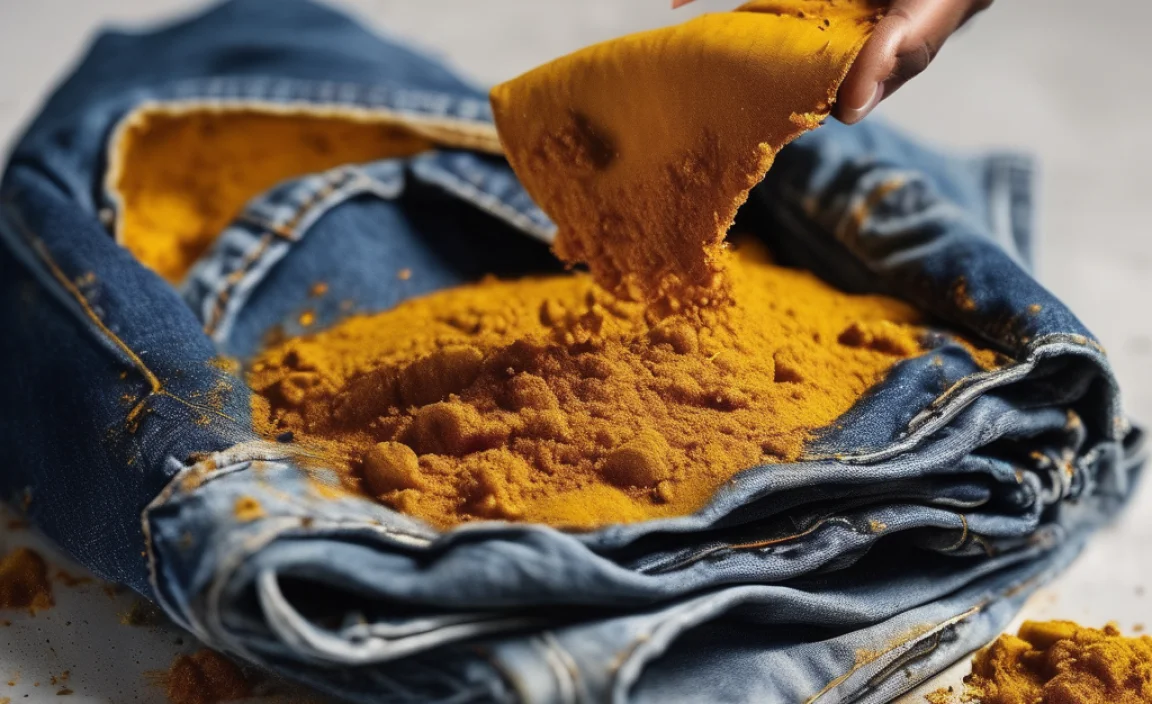
When the usual methods aren’t cutting it, here are a couple of more potent options to try. Always test these on an inconspicuous area of the jeans first.
Option 1: Vinegar and Baking Soda Paste
Vinegar is a mild acid that can help break down stains, while baking soda acts as a gentle abrasive and deodorizer.
- Make the Paste: Mix equal parts white vinegar and baking soda to form a thick paste.
- Apply to Stain: Apply the paste generously to the curry stain.
- Let it Work: Allow the paste to sit on the stain for at least 30 minutes, or until it dries.
- Scrape and Rinse: Gently scrape off the dried paste, then rinse the area with cold water.
- Proceed to Wash: Launder the jeans as described in Step 3.
Option 2: Oxygen Bleach (Color-Safe Bleach)
For white or light-colored jeans, oxygen bleach can be a powerful stain remover. Ensure your jeans are not dark or colored, as this can cause bleaching or discoloration.
- Check Care Label: Always consult the care label on your jeans to ensure they can tolerate an oxygen bleach treatment.
- Prepare Solution: Mix oxygen bleach with water according to the product’s instructions. Usually, this involves dissolving powder in warm or hot water, but it’s always best to follow the specific directions.
- Soak: Soak the stained portion of the jeans in the oxygen bleach solution for several hours, or as recommended by the product.
- Rinse and Wash: Rinse thoroughly with cold water and then wash the jeans as usual in cold water.
- Air Dry: Air dry and inspect.
For reference on fabric care and stain removal, the PennState Extension provides excellent, fact-based advice applicable to household fabrics.
What NOT to Do When Removing Curry Stains
Certain actions can make the stain worse or more permanent. Avoid these common mistakes:
- Using Hot Water: As mentioned, hot water will cook the stain into the fibers. Always start with cold water.
- Rubbing Vigorously: This can spread the stain and damage the denim.
- Using a Chlorine Bleach on Colored Denim: Chlorine bleach will remove color and can damage fabric, especially denim.
- Drying Before Stain is Gone: The heat from a dryer is the ultimate stain-setter.
- Using Colored Towels for Blotting: Dyes from colored towels can transfer to your jeans. Always use white cloths or paper towels.
Understanding Stain Types and Treatments
Curry stains fall into a category of what’s called “combination stains” because they often involve both oil and pigment. The effectiveness of stain removers often depends on their ability to tackle these different components.
Here’s a quick look at how common stain removers work:
| Type of Cleaner | How It Works | Best For | Good for Curry? |
|---|---|---|---|
| Dish Soap | Emulsifies oils, breaking them down so they can be washed away. | Grease, oil-based stains. | Yes, especially for immediate treatment. |
| Enzyme-Based Detergents/Removers | Contains enzymes that break down organic matter like protein and grease. | Food stains, blood, grass. | Highly effective for curry. |
| Vinegar | Mild acid that can help lift pigment and neutralize odors. | Some dyes, mineral deposits, odors. | Can help, often used in conjunction with other methods. |
| Baking Soda | Mild abrasive and alkali that can lift stains and deodorize. | General stain lifting, odors. | Often used as a paste with vinegar or as a paste with water. |
| Oxygen Bleach (Color-Safe) | Releases oxygen when dissolved in water, breaking down chromogens (color-causing molecules). | Color stains, brightening fabrics. | Effective on light/white fabrics, use with caution on colors outside a test area. |
| Chlorine Bleach | Powerful oxidizing agent that breaks down chromogens and kills microbes. | Heavy bleaching, disinfecting. | No, except for pure white denim, as it damages fabric and removes color. |
Frequently Asked Questions (FAQs)
Q1: Can I use regular laundry detergent on curry stains?
While regular laundry detergent can help, an enzyme-based detergent or stain remover is far more effective against the specific components of curry, like oils and turmeric pigment.
Q2: How long can a curry stain set before it’s impossible to remove?
The longer a stain sits, the harder it is to remove. While many stains can be removed days or even weeks later with persistent effort, fresh stains are always easier to tackle. Avoid heat, as this sets them much faster.
Q3: What if my jeans are a dark color? Can I still use bleach?
Never use chlorine bleach on dark or colored denim, as it will permanently bleach the color out. For dark jeans, stick to dish soap, enzyme-based removers, and vinegar treatments.
Q4: My jeans are cotton. Does the fabric type matter?
Yes, 100% cotton denim is porous and can absorb stains deeply. You can be a bit more aggressive with scrubbing on cotton than on delicate fabrics, but always be mindful of the weave and avoid excessive force.
Q5: Can I spot-treat just the stained area?
Yes, spot-treating the stained area with a stain remover is the first and most effective step. However, after spot-treating and washing, it’s wise to inspect the garment thoroughly to ensure the entire stain is gone. Sometimes, the stain might be larger than it appears.
Q6: What’s the best way to dry my jeans after stain removal?
Always air dry your jeans after attempting to remove a curry stain. Hang them up and let them dry naturally. Only once you are certain the stain is completely gone should you consider putting them in a dryer, and even then, use a low heat setting.
Conclusion: Keeping Your Denim Curry-Free
Removing curry stains from your jeans might seem daunting, but it’s a manageable task with the right knowledge and approach. By acting quickly, using cold water, and employing effective stain-fighting agents like dish soap and enzyme-based removers, you can significantly increase your chances of saving your favorite denim.
Remember the golden rules: blot, rinse with cold water, pre-treat, soak, and air dry until you’re confident the stain is gone. Don’t be afraid to repeat the process for stubborn marks. With a little patience and persistence, your jeans will be back to their stylish, stain-free selves, ready for your next adventure – perhaps one with less curry!






